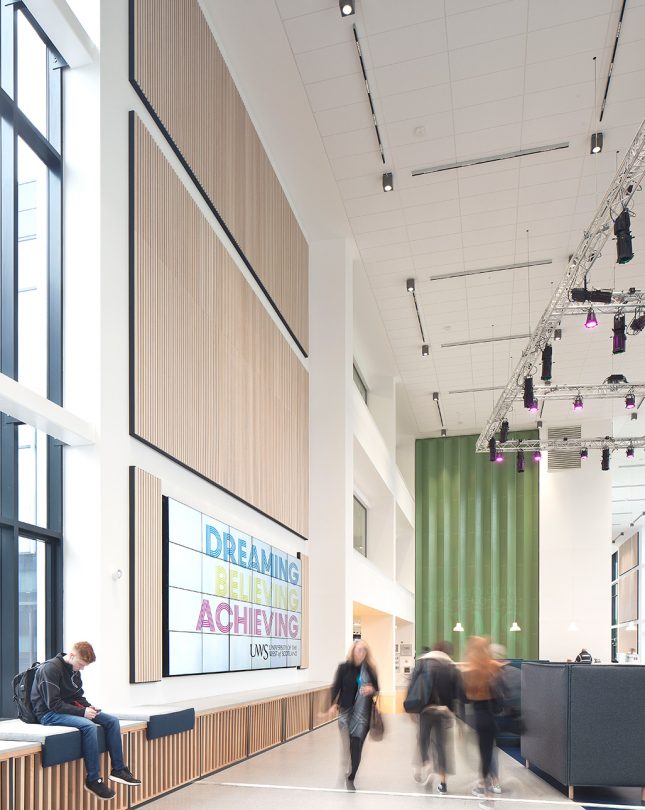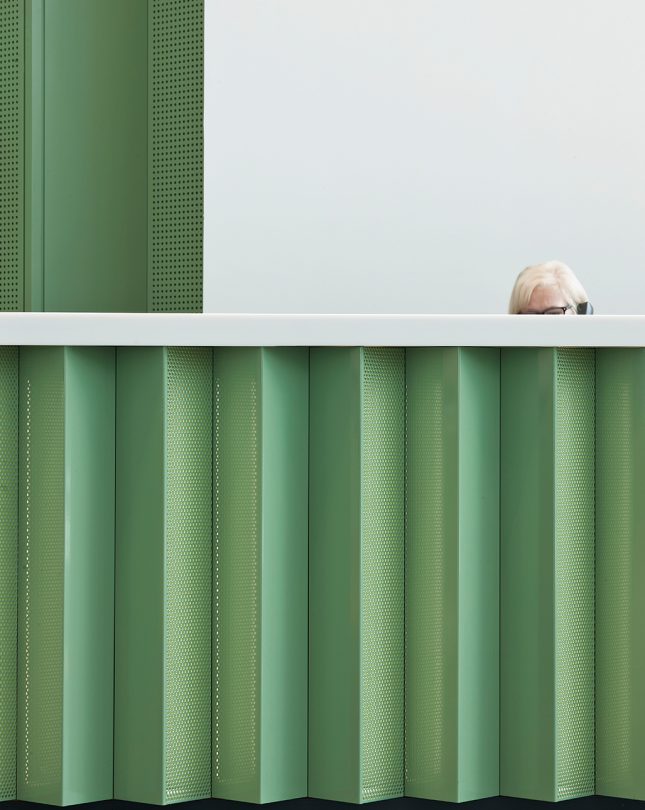Our latest news and views English
Underpinned by our Scandinavian design heritage, we bring you regular stories about architecture and interiors, exploring natural materials, acoustics, and the creation of safe and harmonious environments.
As the competition for students becomes greater, universities are adapting the look and feel of their environments to become far more flexible. An example is ‘The Street’, a multifunctional environment at the University of the West of Scotland, which cleverly plays with proportion, colour and furniture elements to create a variety of spaces.

“The reality is there are big challenges within the higher education sector at the moment,” begins Ross Hunter, director at Graven, a Glasgow-based design studio, reflecting on its work at ‘The Street’ element of the University of the West of Scotland (UWS). The landscape for universities and colleges is particularly tough given the competition to attract both domestic and overseas students, as well as functioning during a pandemic. Hunter advises these centres of learning to take on board what’s happening in the world of the workplace, “Corporate offices have been evolving away from people stuck at their desks and towards providing a range of good quality spaces that people want to use to achieve a particular task.” Graven’s portfolio encompassess workplace and education projects, along with hospitality and retail. The practice is perfectly placed to achieve this knowledge transfer between sectors.
Hunter advises that university environments must satisfy the needs of three distinct stakeholder groups: academics, administration staff and students. The latter in particular have had to get used to virtual classes, followed by more blended learning environments in the wake of Covid-19. Having become accustomed to varied ways of working, students now want this flexibility from their university campus too.
While learning spaces were designed by Hugh Anderson (HAA), Graven’s work on ‘The Street’ connects three campus buildings together. The studio won this scheme having successfully worked with UWS on its Paisley Student Hub. “It’s a huge 1400 square metre space with a town square feel,” Hunter says.
The brief called for a modern learning environment to be created in what was a shell and core office development on a technology park – a bold move away from university buildings of old. Graven has provided a lesson in open creative spaces for both collaborative and individual work. It is somewhere to study and socialise, and serves as an information hub. There are boldly coloured interventions which are conceived as pieces of ‘giant furniture’ which serve as information points. These draw attention towards the exaggerated height of the lobby space, and at the same time create areas for quieter concentrated work or conversations. Graven has provided a great example for others in the education sector to consider, in how to temper a vast space by introducing cafe areas and stages where students feel at home. Meanwhile, graphic floor designs help to support the program of functions and presentations that also take place in the space.
An earlier project of Graven worth noting, which demonstrates some of the ideas expressed in ‘The Street’, is the BBC’s Pacific Quay scheme in Glasgow. Here, the workspaces are arranged around the social areas which connect to the reception where visitors and staff can see a huge sandstone ‘street’ with its mix of meeting and working areas.


Back at UWS, Gustafs’ decorative, acoustic panels played their part in achieving an attractive and fluid space for both socialising and studying. The composition of the panels behind and on the information desk is designed in a triangular elevation from floor to ceiling and is realised in a beautiful pastel green. Wooden acoustic panels have also been installed in different sections of the project: birch veneer ribs give an extra design dimension and at the same time work hard to provide acoustic balance.
“There’s always a fear about noise,” says Hunter, “while there are some tasks that require complete silence, mostly a bit of ambient background noise is OK, but you do need to deal with reverberation. Plus, most people are capable of moderating their behaviour to mitigate others being disturbed.”
Hunter adds finally that “far more flexibility is becoming an absolute requirement in the workplace.” This more hybrid, much less formalised way of working is being adopted by forward-thinking universities such as UWS. Its provision of a blurred landscape of teaching and learning environments is what makes it the go-to university in this particular part of Scotland.